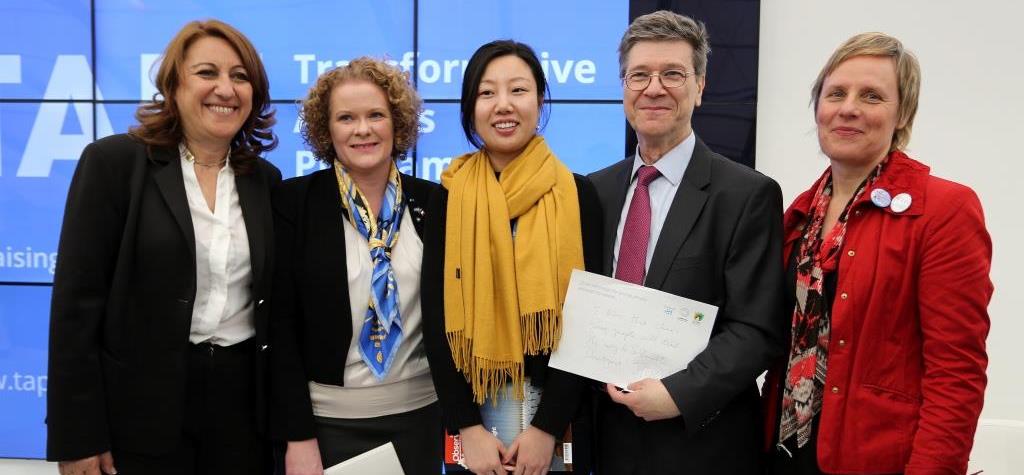The City of São Paulo is on the move: Driving sustainable public transport
A wave of sustainable mobility is reshaping urban public transport in Brazil, led by the City of São Paulo’s pioneering eco-mobility solutions, boasting the largest fleet of electric buses in Latin America. With ambitious goals to cut carbon emissions by 50% by 2028, explore how this 12 million-people megacity is paving the way for a greener ride.
Brazil ranks second globally in bus fleet electrification, only behind China, with São Paulo at the forefront of this initiative. It was the first city in Brazil to introduce its Sustainability Action Plan early in 2008, and it reaffirmed its commitment to zero-emission through its 2021-2024 Goals Program to cut pollutant emissions by 50% in 2028 and achieve complete eradication by 2038.
São Paulo — which is hosting the ICLEI World Congress 2024 on 18-21 June — is the nucleus of a metropolitan region comprising 39 municipalities with approximately 25 million inhabitants. The city boasts a population of 12 million, making it one of the largest urban centers globally. Alongside Tokyo, Mexico City, and Mumbai, the São Paulo metropolitan region stands as one of the most significant urban agglomerations worldwide.
Like any other metropolis in the world, São Paulo has a transportation challenge as big as its size: Every day, 7 million people use public transport from home to work or school, back and forth. The city has an extensive public transportation network, including approximately 11 kilometers of subway lines, 4.5 kilometers of train routes, and a fleet of 12,000 buses circulating throughout its streets. Notably, buses are the preferred mode of transportation for Paulistas, who often face lengthy journeys of around two hours, even without traffic congestion. In addition, this high demand for public buses comes with environmental costs, contributing to 61% of greenhouse gas emissions.
“In such a big city, we can not change the transport matrix, but what we can change instead is the energy matrix that feeds it,” says Edson Aparecido, Municipal Secretary of Government at São Paulo City Hall.
Reducing emissions through expanded and cleaner public transport
With the assistance of international and national loans, the city has secured 2 billion USD to introduce 2600 e-buses by the end of 2024, to have 20% of its bus fleet powered by sustainable energy.
Recently, 19 electric buses came into circulation and additional 50 units should be integrated soon, solidifying São Paulo as the leader in Latin America for fleets powered by clean energy. The new electric buses in the fleet are designed with accessibility features and can accommodate approximately 100 passengers. Each electric bus significantly reduces air pollutants such as nitrogen oxides and carbon dioxide emissions.
This proactive approach underscores the city’s commitment to providing both drivers and passengers with cleaner, quieter, modern, and comfortable transportation options. Introducing electric buses not only benefits the environment but also enhances the overall quality of life for São Paulo residents, promoting a healthier and more sustainable urban environment for all.
Five new bus corridors were built to decrease passenger transit time, and new bicycle lanes were implemented, a means of transport that, a decade ago, São Paulo officially recognized as a city’s key piece of its transportation system.
Alongside these efforts, the city is expanding its public transportation network by introducing new trams powered by underground electrical systems in its downtown area. Additionally, it is planning water transportation terminals in southern São Paulo, particularly in the Guarapiranga Reservoir, to reduce the two-hour bus ride from there to downtown to just a 20-minute aquatic journey.
Further actions highlight the city’s commitment to transitioning all trucks responsible for transporting city garbage to gas-powered vehicles, eliminating the use of diesel oil-powered trucks.
Redefining urban sustainability
In addition to transitioning the city’s fleet to more sustainable options, there has been a fundamental shift in the way the urban environment is perceived and prioritized. Beyond mere preservation, the urban environment is now seen as an integrated ecosystem. “Talking about sustainable transportation is not only about changing the energy matrix. This is about an even larger matrix that cuts across the environment, equity and justice, gender and race, and education. For São Paulo, that is the meaning of quality of life,” reflects Rodrigo Ravena, Environment Secretary of São Paulo City Hall.
This holistic approach underscores São Paulo’s commitment, under the leadership of Mayor Ricardo Nunes, to a transversal policy that represents a cornerstone of the city hall’s vision, redefining what the urban environment entails. The adoption of electric buses symbolizes a broader understanding that environmental concerns intersect with various aspects of urban life, aiming to provide better transport conditions and ultimately enhance the quality of life in São Paulo. These efforts demonstrate a dual commitment to environmental protection and socioeconomic well-being, as they aim to safeguard jobs, promote education, and improve transportation infrastructure.
*This blog was written based on ICLEI’s COP28 session “Sustainable transformation: Public transport in São Paulo.” You can watch the livestream here.







